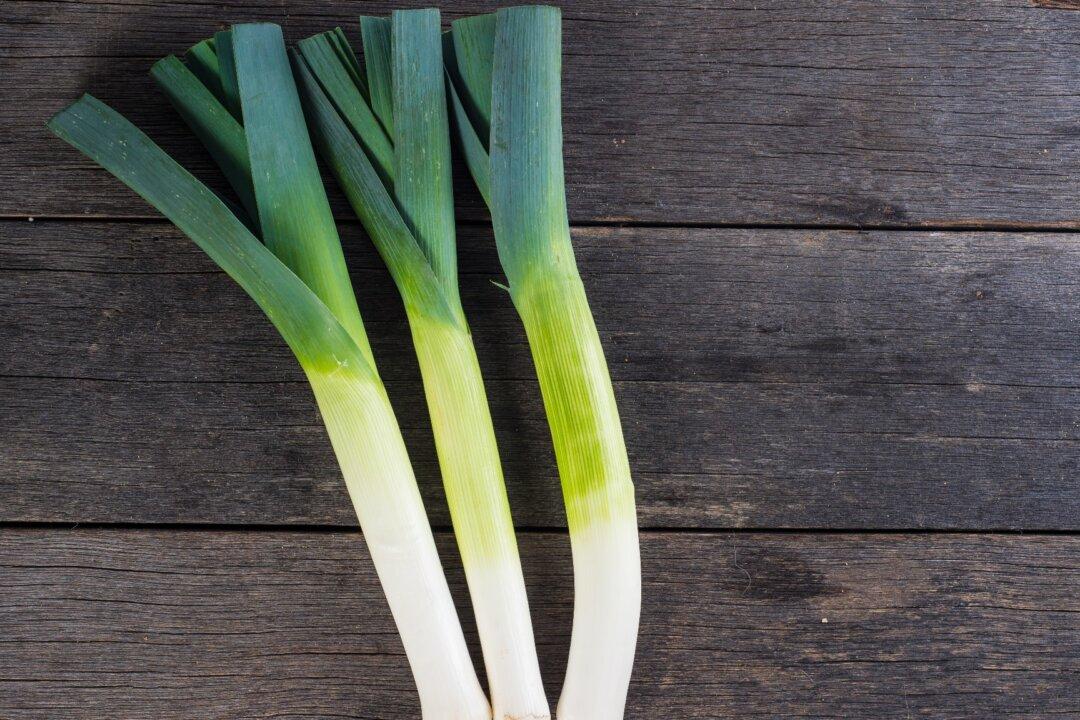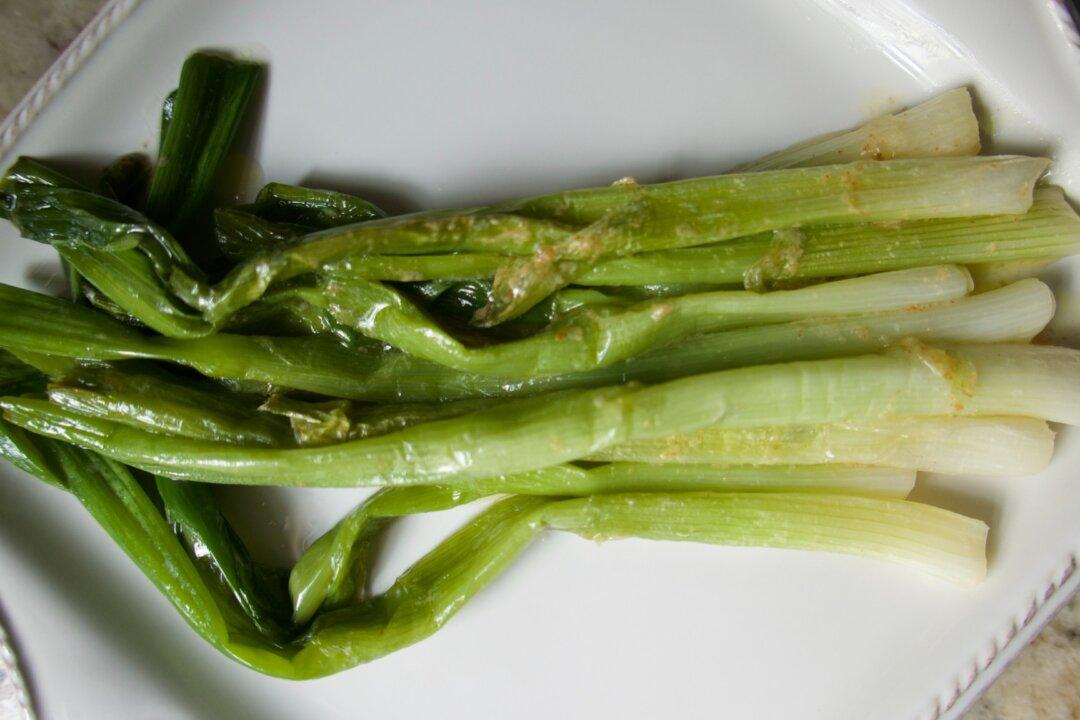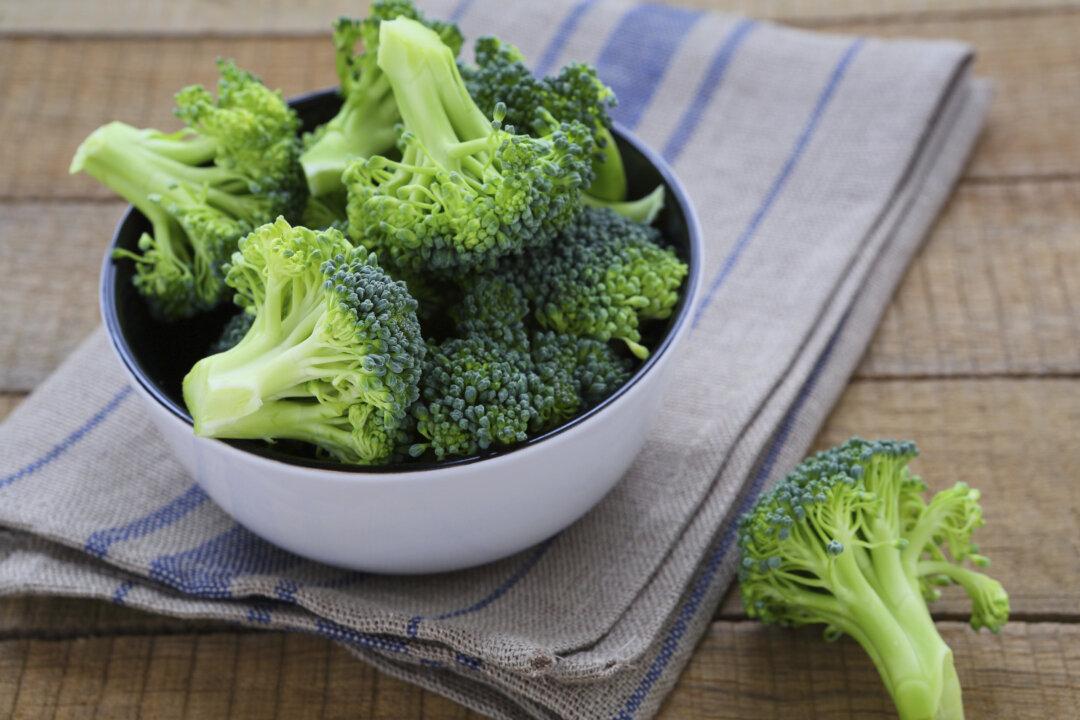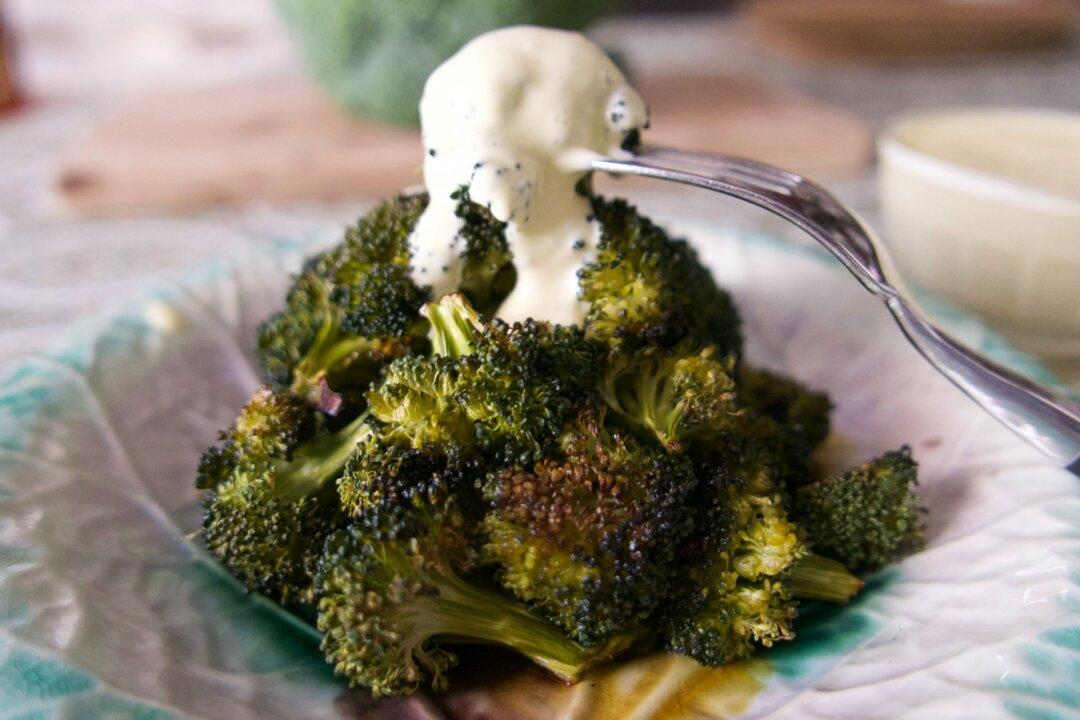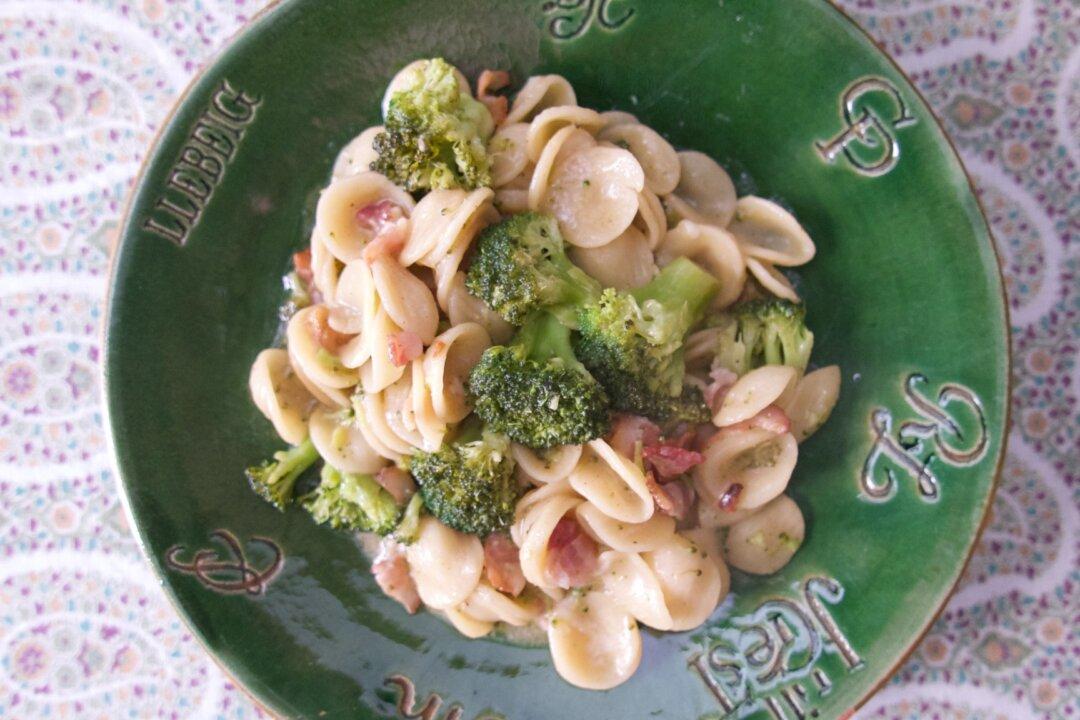It’s during those weeks when winter is nearly over and we play peek-a-boo with spring that leeks shine at the market in all their glory. Yes, they are available year-round, but to me, leeks are the gateway into springtime foods, the transition between hearty winter stews and delicate warmer-weather fare.
Together with garlic, shallots, scallions, and chives, leeks are part of the allium family. They have an onion-like texture, with similarly tightly packed layers, but are milder and sweeter in flavor. They grow long and stringy, varying in thickness, with dark green leaves that are tough and often inedible, and white and pale green bottoms that turn silky and sweet when cooked.

